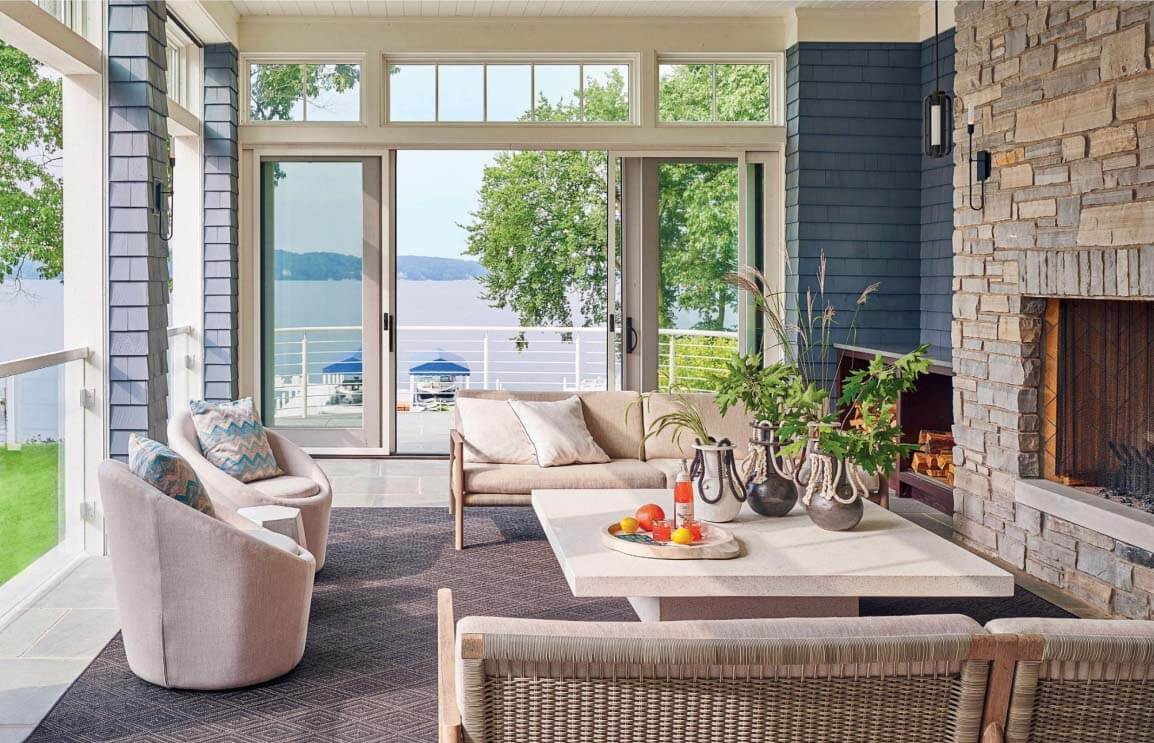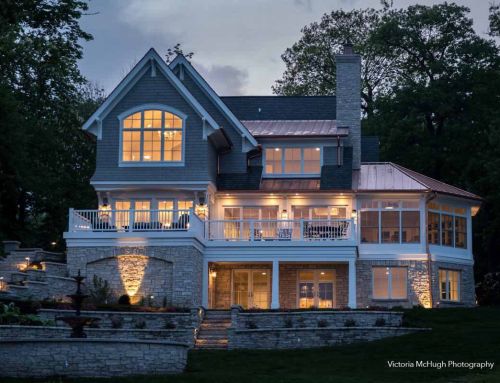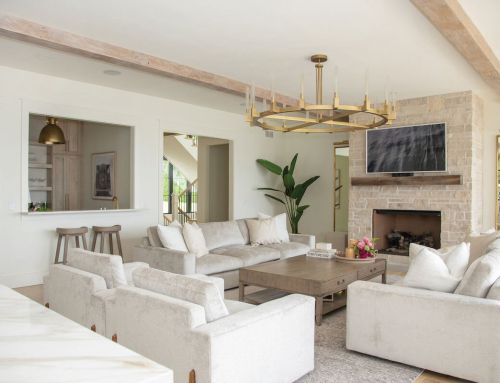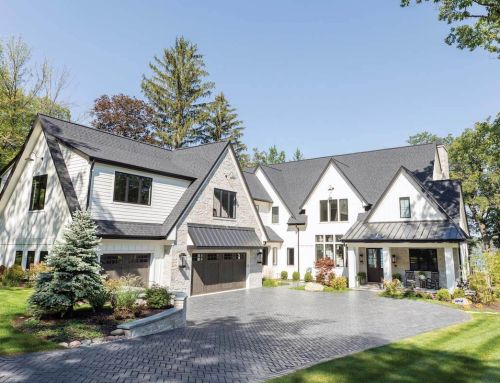
Amid Gilded Age mansions and nouveau chateaus, a design team puts a fresh take on a Lake Geneva summer house.
There’s a footpath that follows the 21-mile shoreline of Wisconsin’s Geneva Lake. It winds right through the backyards of summer homes built by legendary families such as the Schwinns. the Wrigleys and the Maytags. But beyond the obvious opportunity it provides—up-close ogling of blue-chip estates—it offers a unique perspective on the lake house in all its forms. from Tudor lodge to turreted Queen Anne.
When Chicagoans John and Sarah Cobb and their daughter would amble along the footpath during vacations spent at their home off the water. they’d often imagine the place they would add to that mix. So when a rare lakefront lot came up for sale, they decided to build it.
The couple envisioned a contemporary take on the stone-and-shingle cottages of the Northeast. a home anchored by a dramatic catwalk—a concept they had spotted in the portfolio of architects Fred Wilson and Ellssa Morgante. So the Cobbs hired the duo and a design took shape. with that striking detail at its core. “I’ve always loved those interstitial spaces,” Wilson says of the canvalk concept. “So I thought. “Let’s explore that idea of walking through the trusses:” The suspended hallway—perhaps the most challenging detail tackled by builderJohn Matustik—spans the home’s double-height great room, passing through the steel chimney and connecting the top-floor bedroom wings.
On the main floor, that feature accomplishes a goal that was paramount throughout the house: to strike a balance between grandeur and comfort-”The Cobbs wanted the house to feel like it could absorb 15 of their family and friends but also be comfortable when It’s lust the three of them there: Wilson explains. “The bridge provides a bit of a virtual ceiling, allowing you to feel the vaulted scale of the house but bringing it down so you don’t feel tiny in the space”.
The contrast between the home’s front and rear elevations strikes a similar balance. The front which leans traditional with mullioned windows. Is a more neighborly” one-and-a-half stories tall. Wilson says. The rear soars a full three stories—thanks to the site’s natural slope—expressing a more contemporary language: a standing seam metal roof, steel balcony handrails and wide windows topped by steel I beams. Uniting the two sides are walls of native Lannon stone and slate-blue shingles.
The slate blue nods to Wilson’s passion for incorporating color. He and Morgante proved how cleverly it can be done In the Interiors as well. Take the kitchen: There, set among airy white shades with touches of metal and white-oak floors, a serene blue hue grounds the large island. which features a Mondrian-inspired end piece welded from solid steel.
“It’s a chilled-out, cooler palette, into which we tried to infuse some warmth,” says designer Jennie Bishop. who furnished the house with help from partners Melissa Benham and Kristen Ekeland. It was chunky soft sisals on the floors, stripes on the dining chairs, wallpaper in the bedrooms and a throw everywhere you can sit, And, perhaps most impactfully, a rusty-toned suede on the great room’s laidback armchairs. “They’re kind of like that. New York friend who comes to dinner looking effortlessly tousled—and so much cooler than you do: Bishop says of the seats. “They’re wrinkled to start with, and they just get better with age.”
Which is exactly what the Cobbs wanted. “We said. “We want to be able to sit in every seat in a wet bathing suit, and to leave a melting popsicle on any table for two hours—after that, we can be flexible,” John says. Bishop capitalized on that freedom, incorporating bold yet bulletproof furnishings such as a cinnamon-colored quilted chair in the breakfast nook, blue kitchen counter stools that are Intentionally ‘a little clash-y” with the Island. and a custom dining table inset with a metal trough. “I want everything to have enough interest that it’s not boring,” she says. “but I don’t want anything to be over the top.”
Landscape architect Scott Freres echoed this sentiment when describing his role, which encompassed land contouring, plantings, and designing the property’s Milestone terraces and limestone pool deck. “Everything here is about the lake,” he notes, “so putting in lots of plants just to decorate was not the right approach. Sometimes you have to recognize that the game is 1101 to fight against what you’re given, but to borrow from what’s already there.” And on this storied stretch of waterfront, that turned out to be more than enough.



